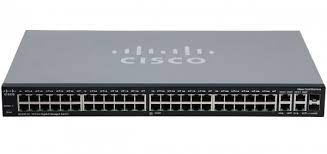THE ELEMENTS OF COMPUTER NETWORK
THE ELEMENTS OF COMPUTER NETWORK
Computer Network - is a system in which multiple nodes are connected to each other to share information and resources. A computer network allows sharing of resources between different nodes connected within it.
Computer Network Elements - The objects basically used in a computer network are known as Computer Network Elements (CNEs). There are basically 4 computer networking elements.
- Computers
- Transmission medium (wired or wireless)
- Protocols
- Network software
Signals are used to represent data by computers and other telecommunication devices. The signals (i.e., data or information) are transmitted in the form of electromagnetic energy from one device to another. These signals travel through a vacuum, air, or other transmission mediums to move from one point to another (from sender to receiver).
The transmission medium is of two types:
- (i) Wired or Guided: For example, Twisted Pair Cable, Coaxial Cable, and Optical Fiber Cable.
- (i) Wireless or Unguided: For example, Radiowaves, Microwaves, and Infrared.
3. Protocols - There are some defined rules and conventions for communication between network devices. These are called Protocols. Network protocols include mechanisms for devices to identify and make connections with each other, as well as formatting rules that specify how data is packaged into sent and received messages.
Protocols may be of 3 types:
- Internet Protocol
- Wireless Network Protocols
- Network Routing Protocols
4. Network Software - Network software is a foundational element for any network. This type of software helps administrators deploy, manage and monitor a network. The traditional networks are made up of specialized hardware, such as routers and switches, that bundle the networking software into the solution.
Such types of software encompasses a broad range of software used for the design, implementation, and operation, and monitoring of computer networks. Traditional networks were hardware-based with software embedded. When software like Defined Networking (SDN) emerged, the software is separated from the hardware thus making it more adaptable to the ever-changing nature of the computer network.
Credits to https://www.geeksforgeeks.org for the infos.


Comments
Post a Comment